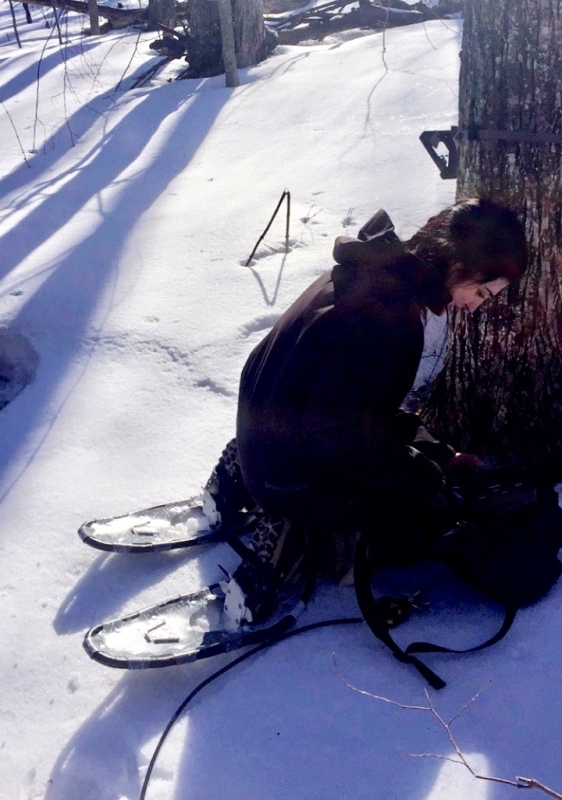SUNY Conference Gives Undergrads Chance to Showcase Research
 SUNY Plattsburgh, in conjunction with SUNY Adirondack in Queensbury, will participate
in the SUNY Undergraduate Research Conference at SUNY Adirondack April 26-27.
SUNY Plattsburgh, in conjunction with SUNY Adirondack in Queensbury, will participate
in the SUNY Undergraduate Research Conference at SUNY Adirondack April 26-27.
More than 30 SUNY Plattsburgh students and their faculty mentors join other SUNY students and faculty from the region, presenting research as varied as “A Mild and Green Esterification Method of Carboxylated Cellulose Nanocrystals” to “Are you a Morning Glory or Night Owl?” in poster and oral formats.
“We are pleased to be co-hosting this special event with SUNY Adirondack,” said President John Ettling. Now in its fifth year, the SURC “brings together student researchers and faculty mentors in a celebration of collaboration and impact. It’s a display that embodies our student-centered approach to higher education.”
Dr. Stephen Danna, dean of the SUNY Plattsburgh Branch Campus at Queensbury, agreed.
“It’s an opportunity to celebrate the remarkable research efforts of SUNY undergraduate students and their mentors. This important conference is a seminal event for our students, showcasing their passion for research and career readiness,” Danna said. “SURC will surely build students’ efficacy and capacity for great work in the future.”
Brings Undergraduates Together
The conference is hosted each year by different SUNY institutions, bringing together undergraduates from across the spectrum of academic disciplines. This year’s keynote address will be delivered by SUNY senior vice chancellor and provost, Dr. Tod Laursen.
Christina Bastien, a senior biomedical sciences major from Queens who graduates in May, and lab partner, Eric Acosta, a senior biochemistry major from New York City, working with Dr. Nancy Elwess, distinguished teaching professor, biology, conducted research on the effect of the Period 3 gene on the human circadian — or internal — clock, which lead to the “Are you a Morning Glory or Night Owl” project.
“The circadian clock is the body’s internal time keeping system that regulates when one wakes up or falls asleep without the help of outside sources, thus determining if one is a morning person or an evening person,” Bastien said. After completing a statistical analysis, our hypothesis was accepted. The Period 3 gene influences our circadian clock.”
Elwess will taking six of her students to the SURC.
Saranac native Jacob LaVarnway, a senior biology major will be at the conference with his research on Adirondack freshwater, collected from Lake Champlain, and the parasites that affect them.
Parasites in Fish
“From the research, we found that the majority of native fish that were affected by parasites were the fish with larger body and tail lengths as compared to others,” LaVarnway said. “This is most likely because of the age of the fish and their ability to survive as a host to more parasites.”
He works with Dr. Alyssa Gleichsner, “the resident parasitologist on campus.
“I was selected to work with her on this project because I am a licensed veterinary technician and am familiar with common parasites,” he said. “I am very excited and honored to have this opportunity.”
Alison Puliatte, assistant professor in education, will bring two childhood education majors, Kaitlyn Small, a junior from Campbell Hall, N.Y., and Lauren Lionetti, a senior from Fly Creek, N.Y., to Queensbury. Small will present, “Mental Health Education in Elementary School,” and Lionetti will present, “How Flexible Seating Impacts Student Movement and Behavior.”
Puliatte said both students are members of the Teacher Education Student Research Group, which meets with her and Dr. Kelli Miller, assistant professor in psychology, to conduct research in topics related to elementary education.
“This is quite an impressive group of students because the work that they do is not connected to a course,” Puliatte said. “They participate to enhance their knowledge about the field of education.”
“I was interested in seeing what programs exist in schools currently and how they function,” Small said. She said she discusses “the importance of teaching young children about the many aspects of mental health and hot it can help them in all areas of life.”
Deer Research
Jesse Pruden, a senior who transferred to the ecology major as a junior who will graduate in December, has been studying the deer population in northern Adirondack forests and will present her findings with Dr. Mark Lesser, assistant professor from the Center for Earth and Environmental Science, who said he’ll be bringing six of his independent study students to the conference.
“Jesse’s project involves looking at how deer use different forest types as habitat, and in the long term, what effects deer have on the forest,” Lesser said.
“I have been collecting my field data from game cams that we have set up in a northern hardwood forest on the William H. Miner Institute property in West Chazy,” Pruden said. “Four cameras are set in a recently cut forest; the other four are in an older forest that has not been harvested for more than 40 years.”
“She is also able to look at how deer use each stand differently on a seasonal basis and how deer usage interacts with other wildlife usage,” Lesser said. After building barriers in each of the camera stands, Pruden will also be able to take a look at how the forest will change when there are no deer present versus the rest of the forest where deer are potentially having an influence.
More than 110 abstracts have been submitted from SUNY students attending the conference with 250-300 attendees expected, Danna said.
For more information on the SUNY Undergraduate Research Conference, visit www.suny.edu/surc or email [email protected].
Photo: Jesse Pruden collects data on deer population at Miner Institute
News
SUNY Plattsburgh, NCCC Announce New Admissions Initiative

SUNY Adirondack Students Benefit from New Dual Agreement with SUNY Plattsburgh Queensbury
